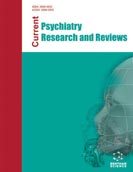
Abstract
Background and Objective: Patients aged 12 – 18 years presenting to Community Eating Disorders Services (CEDS) commonly describe problematic use of the internet (PUI). Time spent on the internet, internet experiences of social comparison, looking at food and sites offering weight and shape and fitness advice are all described during the onset of eating disorders and continue through treatment. We found that there is a lack of a clinical tool to assess PUI and its role in the development of eating disorders, and thus developed the Eating Disorder Online Activity Questionnaire (EDOAQ).
Methods: This qualitative study involved 10 adolescents accessing community treatment for eating disorders, who were invited to engage in a brief semi-structured interview inquiring about their completion of the EDOAQ and experiences of the internet. Five clinicians working with the patients were also invited to participate in a similar process. Interview data was thematically analysed.
Results: All participants described high use of the internet. Patient and clinician experience was generally positive regarding the clinical use of the EDOAQ, and modifications for the questionnaire were suggested. Participants also reported the necessity of online activity and the easy access to harmful content. Participants found the EDOAQ improved self-awareness of this and led to healthier online use.
Conclusions: Patients presenting with eating disorder need to be screened for PUI. Assessing clinicians found a questionnaire inquiring about the use of the internet useful in assessment and treatment for eating disorder. Most patients found completing a questionnaire less intrusive and easier than talking.
[http://dx.doi.org/10.1080/02673843.2016.1227716]
[http://dx.doi.org/10.1016/j.addbeh.2018.09.007] [PMID: 30579146]
[http://dx.doi.org/10.3389/fpsyg.2018.02128] [PMID: 30443238]
[http://dx.doi.org/10.3389/fpsyg.2017.01356] [PMID: 28848472]
[http://dx.doi.org/10.1191/1478088706qp063oa]
[http://dx.doi.org/10.1007/978-981-10-5251-4_103]
[http://dx.doi.org/10.1007/s11199-018-0993-6]
[http://dx.doi.org/10.1089/cyber.2020.0478] [PMID: 33185488]
[http://dx.doi.org/10.1016/j.bodyim.2017.10.002] [PMID: 29055773]
[http://dx.doi.org/10.1016/j.chb.2017.10.027]
[http://dx.doi.org/10.1080/10640266.2020.1790271]
[http://dx.doi.org/10.1016/j.euroneuro.2018.08.004] [PMID: 30509450]
[http://dx.doi.org/10.1007/s40519-019-00808-3] [PMID: 31679144]
[http://dx.doi.org/10.1080/13645579.2016.1144401]
[http://dx.doi.org/10.1016/j.psychres.2020.113264] [PMID: 32622172]
[http://dx.doi.org/10.1016/j.bodyim.2016.02.008] [PMID: 26995158]
[http://dx.doi.org/10.1016/j.neubiorev.2021.03.005] [PMID: 33713700]
[http://dx.doi.org/10.1080/10640266.2010.511918] [PMID: 20865593]
[http://dx.doi.org/10.1080/02673843.2019.1590851]
[http://dx.doi.org/10.1016/j.comppsych.2020.152180] [PMID: 32422427]
[http://dx.doi.org/10.1002/eat.20907] [PMID: 21344465]
[http://dx.doi.org/10.1007/s11920-015-0552-6] [PMID: 25652251]
[http://dx.doi.org/10.1111/1747-0080.12581] [PMID: 31583837]
[http://dx.doi.org/10.1016/S2352-4642(21)00094-8] [PMID: 33864741]
[http://dx.doi.org/10.1002/eat.22589] [PMID: 27441787]
[http://dx.doi.org/10.1111/nhs.12048] [PMID: 23480423]
[http://dx.doi.org/10.1002/eat.23198] [PMID: 31797420]























